Rococo Revival Interior: Captivating Classic Elegance
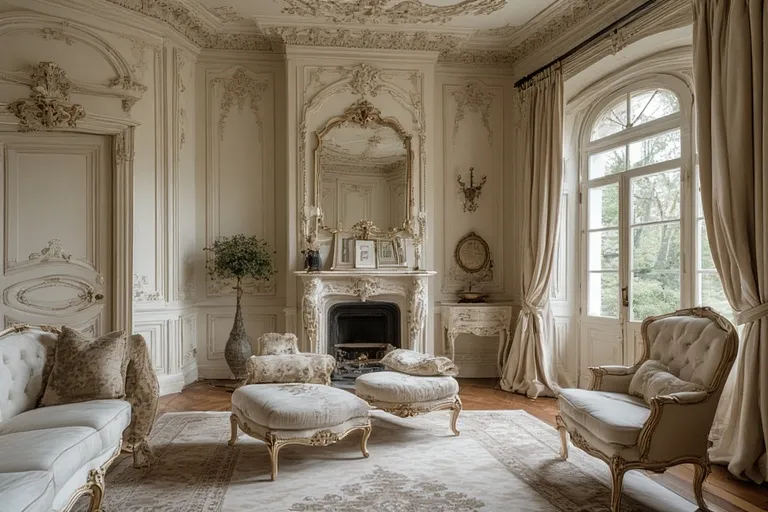
Rococo Revival interior design brings back the opulence and artistry of the past with a touch of modern sophistication. Characterized by intricate details, soft pastel palettes, and graceful curves, this style transforms interiors into elegant works of art. Rooted in 19th-century craftsmanship and inspired by the romance of the 18th century, Rococo Revival is a celebration of beauty, charm, and timeless grandeur.
The Origins and Essence of Rococo Revival
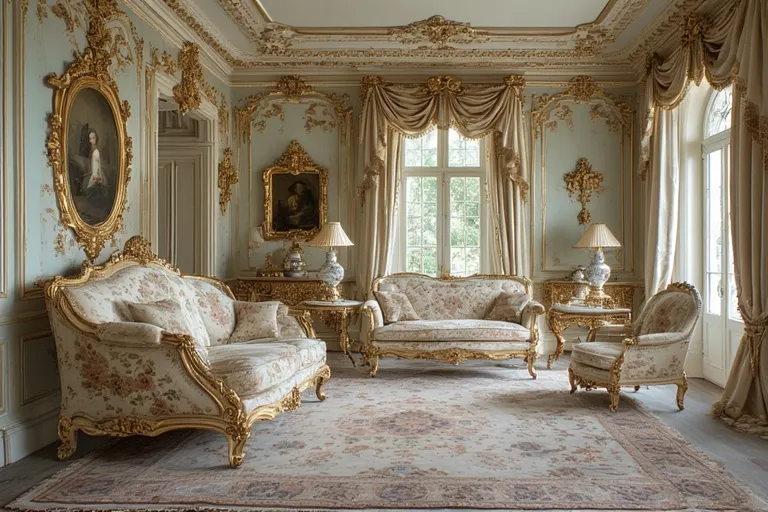
To truly appreciate the Rococo Revival, it’s important to understand its historical roots. The original Rococo movement flourished in early 18th-century France under the reign of Louis XV. It represented a shift from the grandeur of Baroque toward something softer, lighter, and more intimate. Interiors were filled with playful curves, floral motifs, gold gilding, and soft color palettes of creams, blues, and pinks.
In the mid-19th century, during the Victorian era, designers began to revive Rococo aesthetics, reinterpreting its graceful features with new materials and industrial craftsmanship. This gave rise to what we now call the Rococo Revival, characterized by elaborate carvings, intricate furniture, and rooms designed to reflect wealth, art, and cultural refinement. You have to look Upcycled Furniture DIY
Characteristics of Rococo Revival Interiors
The Rococo Revival is not merely about decoration — it’s an expression of artistry and sophistication. Here are the defining traits that set it apart:
1. Curves and Fluid Lines
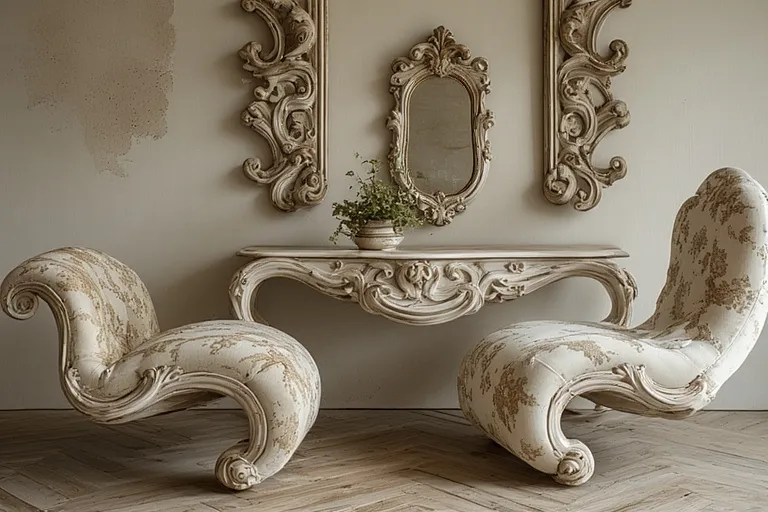
Curved lines are at the heart of Rococo design. From S-shaped chair legs to ornate mirror frames, every element flows gracefully. These organic shapes symbolize movement and liveliness, giving rooms an air of lightheartedness.
2. Intricate Ornamentation
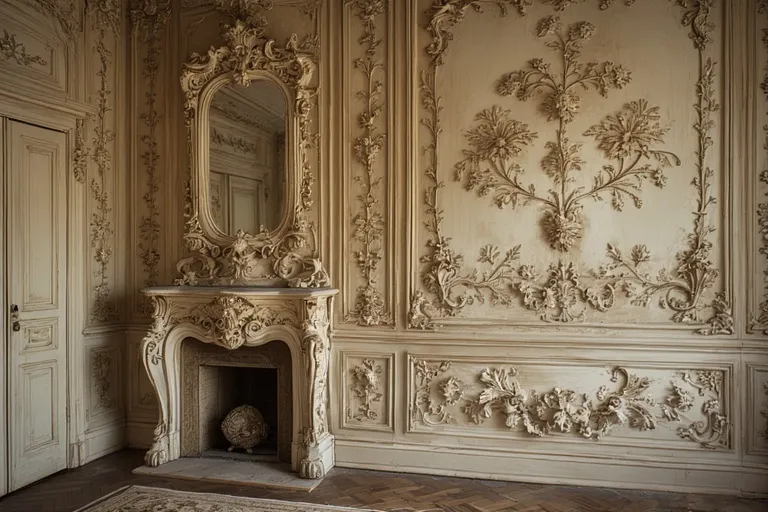
One of the most distinctive features is the use of ornate detailing—delicate carvings of flowers, shells, scrolls, and cherubs often appear on walls, ceilings, and furniture. These motifs reflect nature’s beauty and highlight the craftsmanship behind each piece.
3. Soft and Romantic Color Palettes
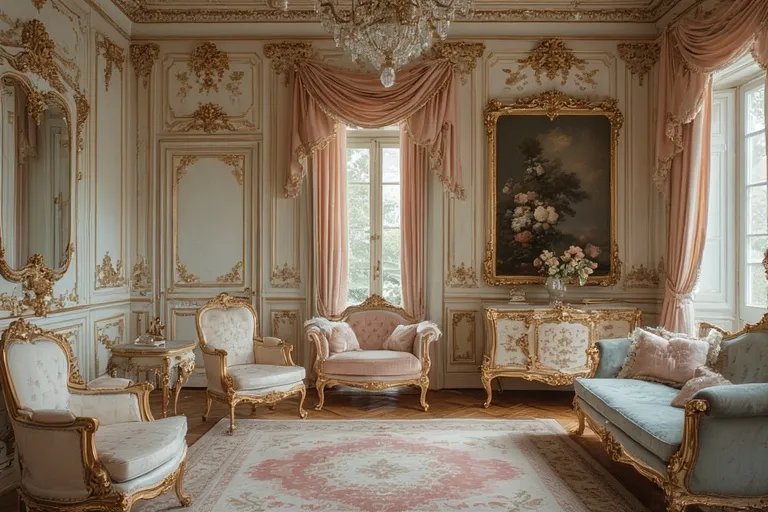
Rococo Revival favor soft hues like pastel pinks, creamy whites, powder blues, and gold accents. The color schemes evoke serenity and romance while maintaining a sense of regality.
4. Luxurious Materials
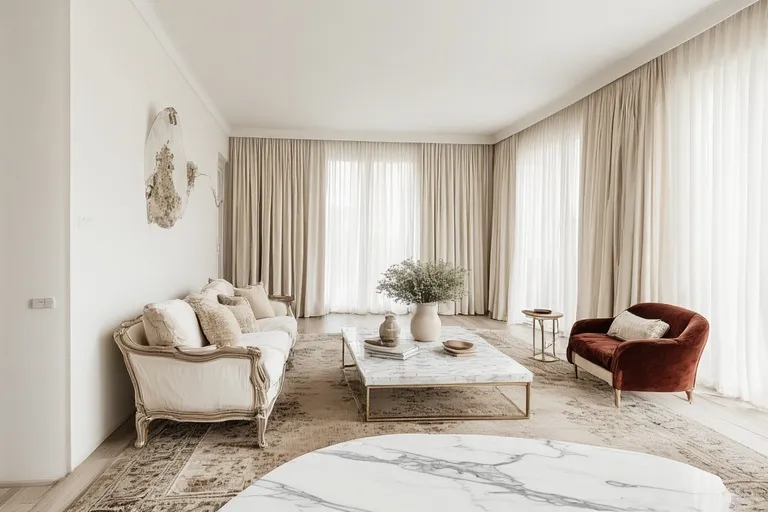
Silk draperies, brocade upholstery, velvet cushions, and marble tabletops were hallmarks of the style. Rich fabrics and polished finishes bring warmth and texture, turning each room into a tactile experience.
5. Gilded and Painted Furniture
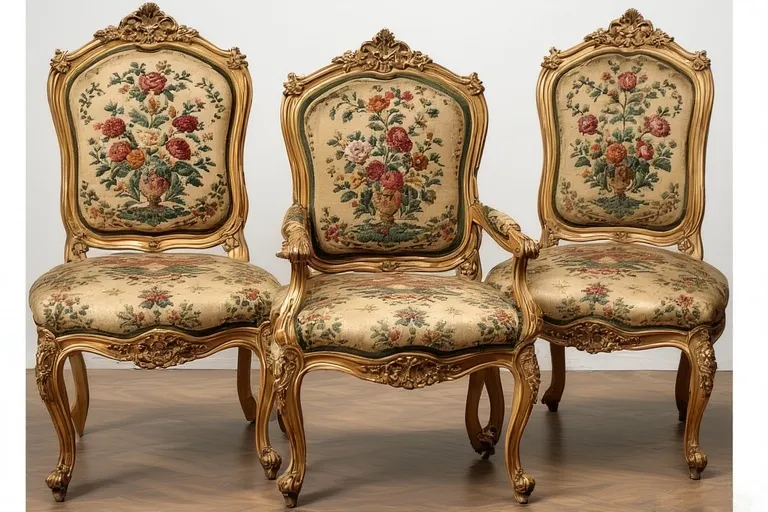
Furniture pieces often showcase giltwood frames, cabriole legs, and upholstered backs with intricate embroidery. Painted details, sometimes depicting mythological or floral themes, enhance their visual richness.
6. Elaborate Ceiling and Wall Treatments
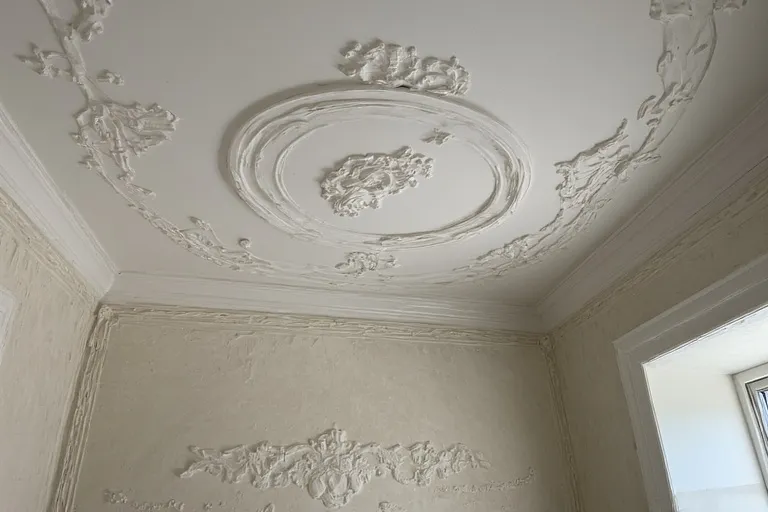
Plaster moldings, ceiling medallions, and fresco-style wall art are signature elements. The goal is to draw the eye upward, creating a sense of height and luxury that feels almost theatrical.
Rococo Interior in Modern Design
In contemporary homes, the Rococo Revival may sound excessive at first, but modern designers have found creative ways to reinterpret its beauty. The key lies in balance—blending opulent details with minimalistic surroundings for a harmonious effect.
1. Statement Pieces
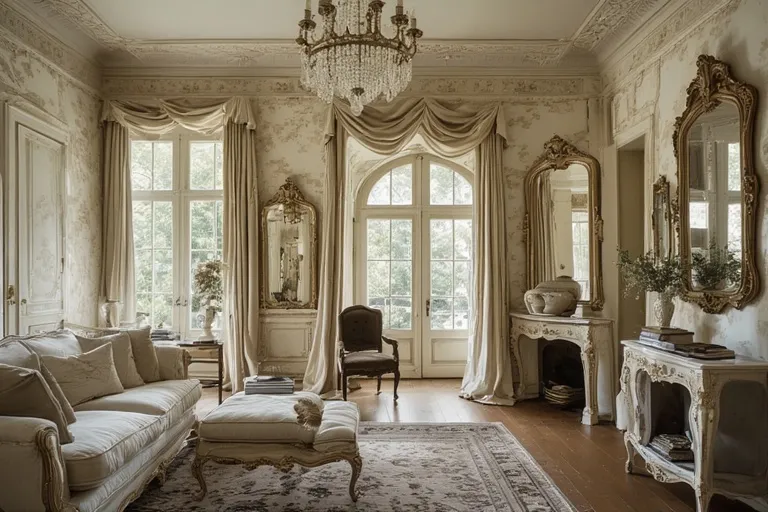
Instead of filling a room with heavy ornamentation, designers today often introduce one or two statement pieces — a Rococo-style mirror, chandelier, or armchair — to add a touch of vintage glamour without overwhelming the space.
2. Modern Color Twists
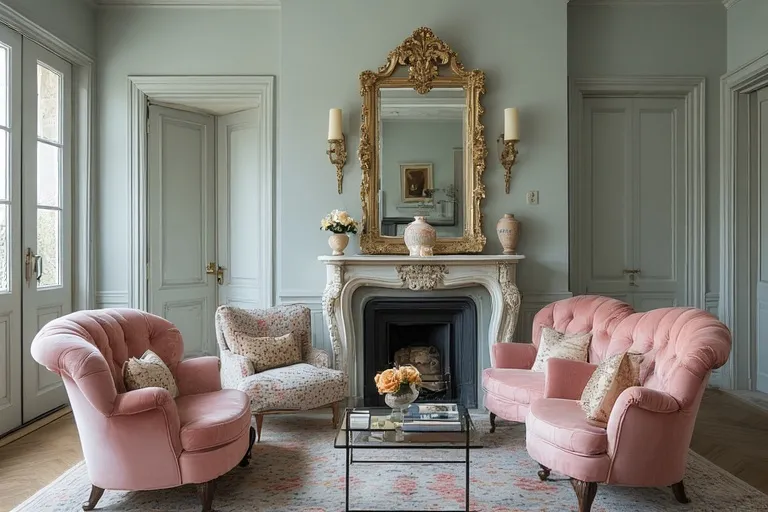
While the traditional palette leaned on soft pastels, modern Rococo-inspired spaces sometimes incorporate muted neutrals or jewel tones to make the decor feel more current and grounded.
3. Mixed Textures
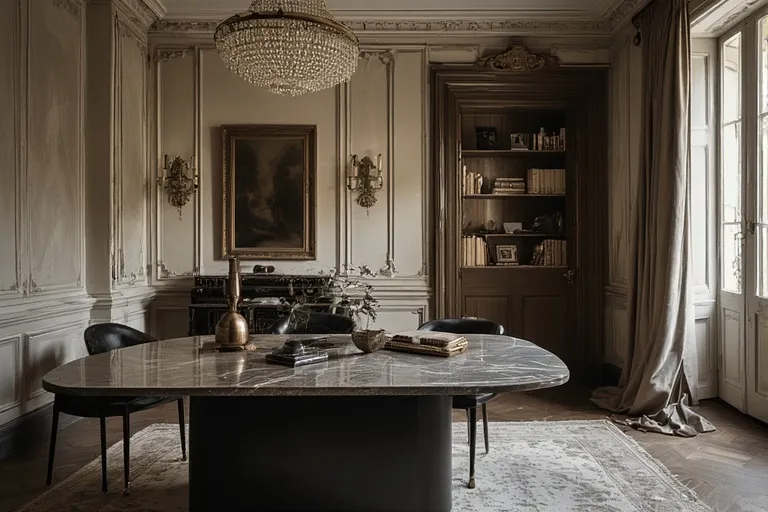
Combining silk and velvet with sleek metal or glass surfaces allows for a beautiful contrast that keeps the space feeling fresh while honoring its classical roots.
4. Lighting and Ambiance
Chandeliers remain an essential feature, but LED technology allows for subtle dimming and energy efficiency. Gold or crystal accents help replicate that warm, glowing Rococo light that enhances the room’s inviting charm.
How to Create a Rococo Revival-Inspired Space
If you’re considering infusing your home with this ornate yet elegant style, here are practical steps to guide you:
1. Start with a Focal Point
Choose one piece that embodies the essence of Rococo — perhaps a gilded mirror, a tufted chaise lounge, or an intricately carved console table. Build your design around that statement item.
2. Layer with Luxurious Textiles
Use fabrics like damask, silk, or velvet in curtains, upholstery, and pillows. Layering textures enhances depth and makes the room feel more inviting.
3. Add Ornamental Details
Ceiling moldings, wall panels, and decorative trims bring that quintessential Rococo touch. Even small details like ornate picture frames or vintage candlesticks can elevate the ambiance.
4. Incorporate Soft Lighting
Warm, diffused light enhances the delicacy of Rococo details. Use chandeliers, wall sconces, or table lamps with gold or crystal finishes to mimic historical lighting styles.
5. Keep It Balanced
Modern Rococo Revival doesn’t have to feel overwhelming. Pair ornate details with clean-lined furniture or simple flooring to avoid clutter and maintain sophistication
Rococo Interior in Architecture
Beyond furniture and decor, the Rococo Revival also influenced architecture. Grand homes of the 19th century featured sweeping staircases, curved doorways, and plaster ceilings adorned with cherubs or floral garlands. These architectural details contributed to an immersive environment of grace and fantasy — every curve and contour told a story of artistry and passion.
Even in today’s architecture, we can see traces of this influence in luxury hotels, European mansions, and boutique spaces that emphasize romantic detailing and sculptural craftsmanship.
Why Rococo Revival Still Captivates Today
In an age where minimalism dominates, the Rococo Revival serves as a counterbalance — a reminder that beauty can exist in abundance. Its elegance lies in the confidence to celebrate artistry and craftsmanship rather than restraint.
Designers and homeowners drawn to this style often seek to express individuality through textures, colors, and ornate elements that tell stories of history and heritage. Whether it’s a vintage armoire, an elaborate ceiling, or a single gilded frame, Rococo Revival brings a sense of timeless poetry to any space.
Conclusion
Rococo Revival Interior continues to enchant design lovers with its lavish curves, intricate details, and romantic atmosphere. By blending old-world charm with modern sensibility, it remains a celebration of art, culture, and beauty that transcends centuries. Whether you embrace it fully or introduce subtle hints into your decor, this style proves that elegance never truly fades — it simply evolves.
Q1: What is Rococo Revival Interior?
A 19th-century revival of the original Rococo style featuring ornate, elegant, and romantic design elements.
Q2: What colors define Rococo Revival interiors?
Soft pastels, creamy whites, golds, and light blues dominate this elegant style.
Q3: How can I add Rococo Revival touches to my home?
Use gilded mirrors, curved furniture, rich fabrics, and detailed moldings.
Q4: Is Rococo Revival suitable for modern homes?
Yes, when balanced with minimalism, it adds vintage charm without feeling cluttered.
Q5: What materials are common in Rococo Revival design?
Silk, velvet, brocade, marble, and gilded wood are signature materials.

One Comment